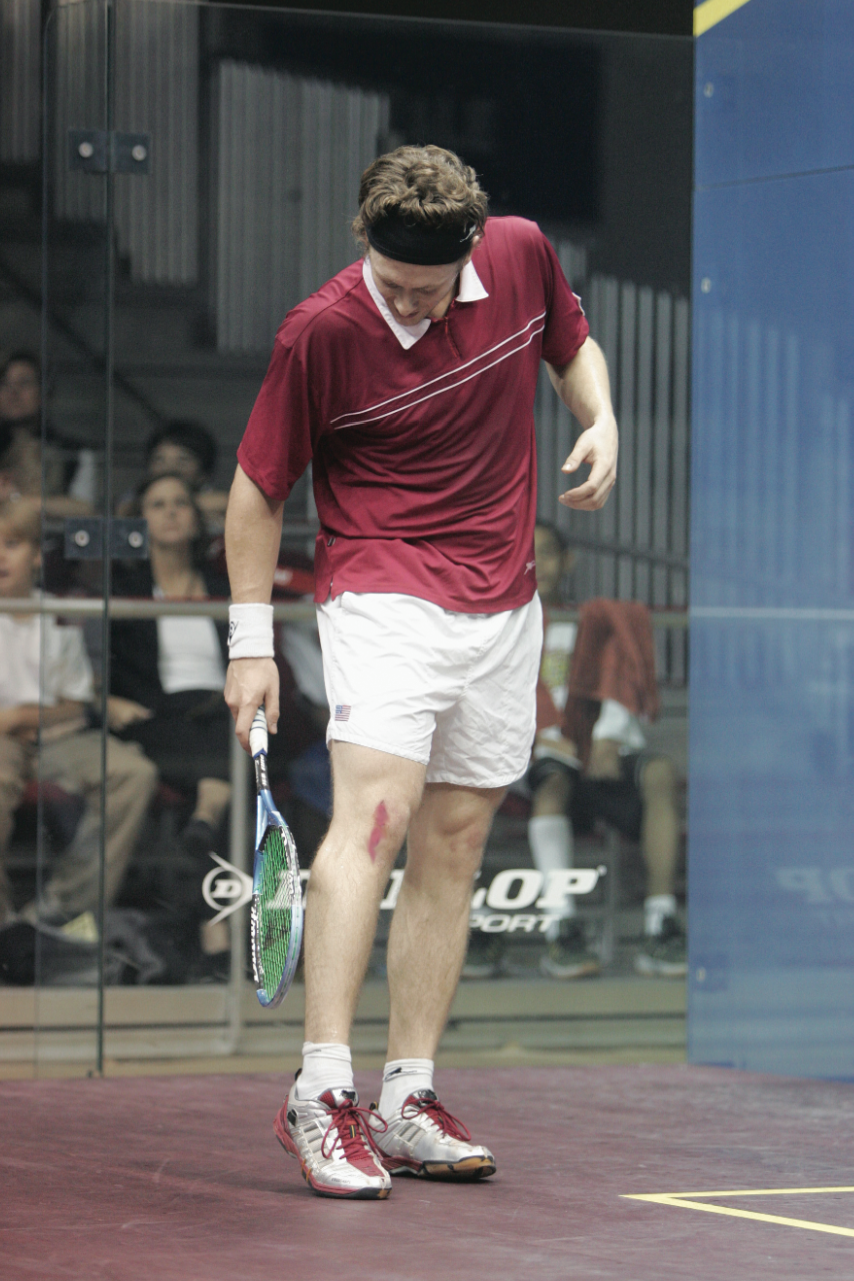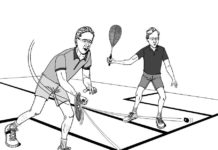By Rod Symington, WSF Referees and Rules Committee
There is perhaps no other Rule in squash that referees get wrong more often than Rule 16: Bleeding, Illness, Disability and Injury. The title itself is frightening enough, but when you read the actual provisions of the Rule, it’s no wonder so many referees have trouble with its complexities. Fortunately, the Rule does not need to be invoked very often— and that is one reason why people get it wrong: They are unfamiliar with it and can’t remember what should be done when a player suffers an injury.
What follows here is a basic lesson on what to do if you are the Referee and a player gets injured on court.

Rule Number 1: Study the Rule and get to know it intimately. There is also an Appendix (4.2) that gives you an appropriately named flow-chart that tells you what to do when the blood flows.
Rule Number 2: When an injury or bleeding occurs, take control immediately! Don’t just stand there with your mouth open; go to the players and inform them what the situation is and what you have decided.
Illness and Disability
We can greatly reduce the complexity of the Rule immediately by noting that pre-existing ailments or disabilities (e.g. asthma, cramps, nausea, or a sprain from last week’s ladder game) are not considered injuries. If the Referee makes that determination, the affected player has the choice of either playing on, or of conceding the game in progress and taking the 90-second interval to recover. After that, it’s play on or lose the match.
So now we are left with just two problems—injuries and bleeding.
Injuries
The first thing the Referee has to do is to decide if the injury is genuine (e.g. a tired player in the fifth game of a long match may fake an injury to gain time to recover energy). If the Referee decides the injury is not genuine, the player must play on (or concede the game, as above).
Injuries fall into three categories:
1. Self-inflicted The player gets three minutes to recover. (The Referee has no option.) After that, it’s play on or concede the game and take the 90-second interval as a last chance to recover.
2. “Contributed” (which means the result of an accidental collision between the players). The affected player gets one hour to recover. If the player requests more time, the Referee may allow it, depending on “the time-schedule of the competition.” Frequently, the affected player is ready to resume play before the hour has passed. In such a case the opponent must be given adequate time to prepare to resume play.
3. Caused solely by the opponent’s dangerous or deliberate actions. If the affected player is unable to continue immediately, that player wins the match. You can see now why it is so important for the Referee to take control right away. You have to tell both players which category the injury falls into and how much time is allowed under the Rules.
Bleeding
All these provisions are thrown out of the window (or rather: the squash court) when bleeding occurs. The somewhat draconian “bleeding rule” in squash is the result of an over-reaction to the AIDS-scare 15 years ago. The Rule was hastily written and we’ve been stuck with it ever since.
Here is what you have to do as a Referee:
As soon as you see that a player is bleeding, stop play immediately! Tell the player to leave the court and a) stop the bleeding, and b) cover the wound securely (a bandage on a sweaty knee will not stay in place). There is no prescribed time-limit for this recovery.
It is very important that the wound be covered securely, because if the player resumes play and the bandage falls off and the wound bleeds again, the player loses that game—and has 90 seconds to rectify the situation. If the wound bleeds a third time, the player loses the match. (That’s why I called the Rule “draconian.”)
Summary
This is a bare-bones explanation of a complex Rule, but if you bear in mind four basic principles, you will be far less likely to make an error:
1. Self-inflicted: 3 minutes
2. Contributed: 1 hour
3. Opponent-inflicted: no time, injured player wins match
4. Bleeding: stop bleeding, cover wound; no time-limit.
As with all other provisions of the Rules, it is important that the Referee be self-confident and decisive. If you know the basic principles, you will be able to make correct decisions—and ensure a fair outcome to the situation.





